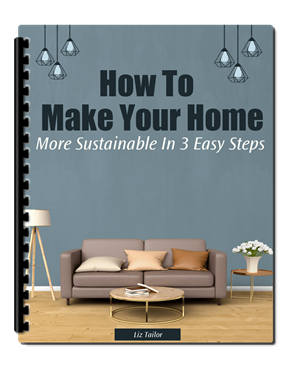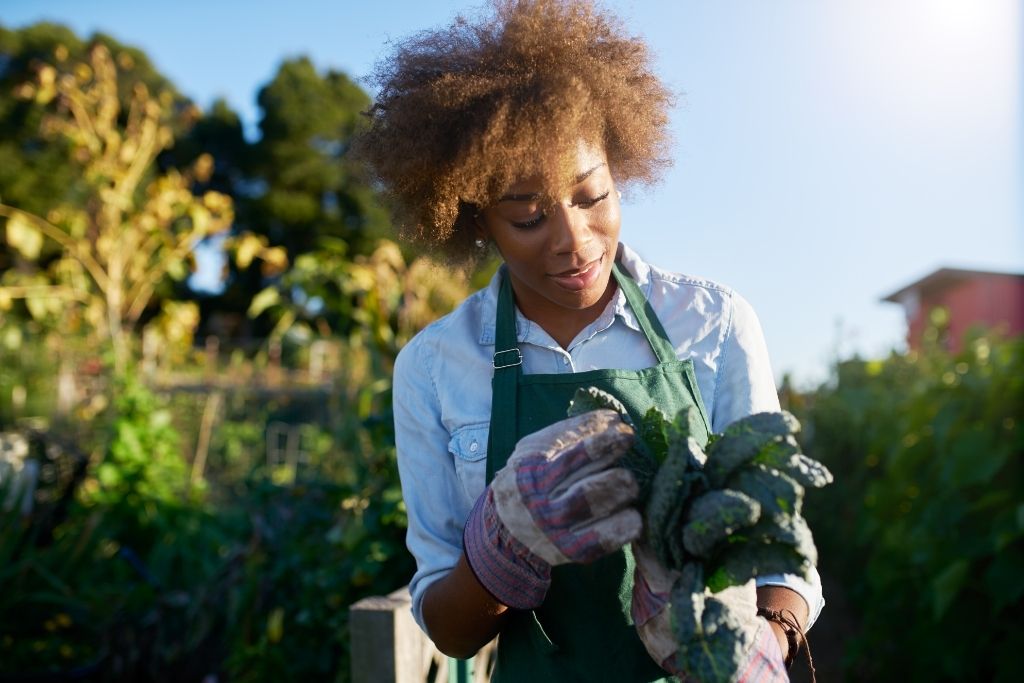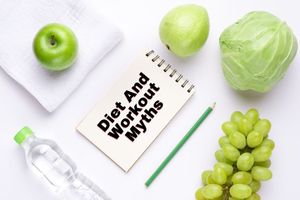In the last few years, have you noticed how home gardening has gotten to be an increasingly popular past-time and hobby?
Studies show that gardening is at an all-time high not only in America but globally as well.
It’s said that in the U.S. 8 out of 10 households take part in some sort of home gardening activity.
Obviously, from the number of individuals that are doing it, home gardening is among the most popular recreational activities in the nation and organic gardening is on the rise.
A huge percentage of people that take up gardening usually try their hand at planting flowers.
People naturally want to plant roses without being aware that they require a little more effort to maintain.
When you’re just beginning, you may want to consider bulbs, perennials, and annuals.
The Basics
Edible plants are a big thing in home gardening. Possibly the best part about edibles is the payoff of eating your harvest.
The list of edible plants that gardeners can grow at home is endless.
A few of the most common edible plants in the veggie arena are potatoes, peas, corn, carrots, squash, cucumber, etc.
A lot of gardeners opt for fruits like watermelons, tomatoes, peaches, plums, apples, pears, apricots, etc.
Little fruits, such as strawberries, blueberries, and raspberries usually require less work and less space, which makes them ideal for home gardening.
Herbs, most frequently used as spices in cooking, are growing in popularity daily; some of the most grown include basil, thyme, oregano, parsley, and cilantro.
Two critical things to watch out for when planting edibles are insects and disease, after all, you don’t want to use pesticides or miss out on the feast you'll get to enjoy from healthy plants.
Many individuals don’t recognize it, but landscaping is a form of home gardening.
Landscaping covers a lot of different areas and forms of gardening.
You are able to even classify mowing your lawn as landscaping.
Keeping in the line of grasses, landscaping almost always involves decorative grasses, and the amazing thing about them is they don’t take much work for upkeep.
There are several types of grass, including Carpet, Kentucky Blue, St. Augustine, Monkey, Pampas, Bermuda, Centipede, Buffalo, Flame, Rye, Bent, Ornamental Millet, Fescue, Bahia, Pasplum, etc.
Landscaping isn't simply limited to plant life, but likewise includes anything done to a yard for decoration to enhance curb appeal, like adding stones or rocks, putting in a little pond, statutes, or a waterfall.
There isn’t much difference between taking care of decorative plants and those that bare edible fruits.
Both types still need to be planted in fertile soil, require water, and some of the same nutrients to keep them healthy.
If you’ve never planted anything in your life, there’s no need to be nervous, because everyone has to start somewhere, and through the process of practicing, you’ll become better until you’ve mastered it.
If you find that you don’t come out of the gate with a green thumb, don’t get discouraged; simply try again next planting season.
Tip: One of the best investments you can make is to purchase a Farmer’s Almanac because it’ll tell you what to plant and when to plant it. It doesn’t get any simpler than that.
Container Gardening
Occasionally, the urge to the garden could be stomped out by other considerations, like living arrangements or space constrictions.
If you live in an apartment, you can’t operate a full garden, simply because you don’t have a yard.
One solution to this problem is to grow plants in containers.
You can hang or arrange them on your terrace, window sill, or balcony.
That’s right, all you need are a few baskets or pots, and you can transform your outdoor living space into a fruit and veggie-producing factory, not to mention enhance the appearance if they are decorative enough.
Smaller Space
An advantage of growing in little containers is the fact that you may move them around to suit your needs.
If you rearrange your furniture and you believe that the pieces would look better if they were in another area, it would be no trouble at all to relocate them.
As long as the lighting is the same where you plan to relocate your plants is the same, they will not mind the transition.
Another advantage of the containers’ versatility is the fact that you may adapt them to simulate any environment depending upon the type of soil you fill it with and where you put it.
If you're attempting to make an aesthetically pleasing arrangement of containers and plants, you may set the containers to be at assorted heights by hanging them from the ceiling or placing them on supports.
Hanging them will let you make the most of the space you have. This is called “vertical gardening”.
If you pull it off correctly, you may make a really pleasing arrangement of plants while conserving your valuable space.
If you live in an apartment, you know how crucial it is to preserve space. One technique of vertical gardening is to utilize a wooden step ladder.
If painted right, you may arrange all the plants on it in a beautiful, fashionable cascade of colors.
The upkeep of container plants can take a little more time to maintain, as you have to water more often and go around to every individual container.
But, the square footage for container plants is much less than that of a true yard garden, so the time spent on upkeep and watering is more balanced.
It's crucial that you don’t over-water your container plants, as this might be simply as fatal to their health as under-watering.
When selecting containers for your plants, you’ll want to purchase them all at once along with a few extras in case they break or you add more plants later.
You don’t want them to be all the same shape and size, but decidedly the same style so that they complement one another.
Plastic containers are the best and need the least amount of watering, however, if you want to stick with clay or earthen pots then you ought to line the inside with plastic.
This helps them hold water more, as the clay will soak up water.
Another thing to remember when purchasing pots is the fact that the size will constrict the size of the plant.
Make a careful selection of pots according to what you wish to grow in everyone.
If you search for the plant you want on the net, you should be able to find specs as to how much root space it ought to be given, in which the seller should provide that information right on the website.
This may even be a benefit for you if you choose a plant that may grow really large.
If you only have a limited amount of space for it, you may constrict it by selecting a pot that isn’t large enough to support large amounts of growth.
If the advantages of container gardening sound appealing to you, then why not begin your planning now?
During the research phase, make a list of the plants you’d like to grow, the sizes of the containers and pots, as well as the style you’d like to purchase.
After that, it’s simply a matter of arranging them in a way that makes your space look the nicest without cluttering it up.
Growing Herbs
Herb gardening is getting to be more and more popular each day, and for good reasons.
Herbs have practical value, serve a purpose, and with herb gardening, you are able to actually utilize your plants.
When most individuals think of herb gardening they automatically think of cooking, but herbs can also be used for their pleasant aroma, healing properties, and their beauty.
Herbs
One crucial part of herb gardening is drying them out to utilize during the winter months, particularly if you plan on cooking with them to make your foods tastier.
First of all, the tops of leafy herbs have to be cut, washed, and hung up for the water to evaporate.
And then, tie the stems together and hang them up in a paper bag to dry.
After about 2 to 3 weeks they have to be removed; then crumble the leaves, dry them out in the oven, and store them in a glass preserving jar.
One of the most basic herbs grown in herb gardens is basil.
Dark Opal and regular green basil are amazing additions to any garden and are frequently utilized as decoration.
Dark Opal has light garden pink flowers and dark red leaves.
Basil isn’t simply utilized for its looks; it’s also used to add flavor to tomato juices, pastes, and other dishes.
Chives are really petite looking and resemble blades of grass. They're much stronger than they look, and will grow well through a drought.
You’ve gotta love a drought-resistant edible plant!
Their ruggedness and sturdiness make Chives a perfect plant for herb gardening, particularly if the gardener doesn’t want plants that call for a lot of work, because in today’s busy society, most of us simply don’t have the time available.
Chives are great in salads, egg dishes, and a lot of assorted sauces.
Mint is really easy to grow and is great to use in mint jelly, mint juleps, lemonade, and any other sort of fruity drink.
Mint is also great in herb gardening for its unequaled minty smell.
Two herbs that appear in almost everyone’s herb garden are thyme and sage.
Both of these herb gardening darlings are utilized for flavoring soups, chicken, turkey, pork, and other sausages.
Sage is likewise grown occasionally for its beautiful blue spiked flowers.
Lavender is likely the best-smelling herb of all and is frequently utilized in candles, as a perfume scent, to improve the smell in linen chests, in aromatherapy to promote holistic healing, etc.
The light purple flowers really do give off a nice aroma.
Additional types of herbs frequently grown in herb gardening include:
- Borage (utilized in salads)
- Chervil (utilized in egg dishes)
- Origanum Majorana (flavors lamb, fish, salad, and soup)
- Sesame (flavors crackers, cookies, and bread)
- Dill (flavors meats and utilized in pickles)
- And so on
Herb gardening lets you use herbs from your own garden for cooking, looks, and smells.
Herb gardening will produce much fresher herbs with more flavor than that store-bought and are less expensive.
They can be grown organically as well.
Organic Mulching For Free
I’m sure that if you're reading this, you have used some form of mulch during your gardening efforts.
You may or may not be aware of all the other choices available for mulching.
These days, a lot of gardeners are discovering fresh sources of free mulch that has been there all along; an untapped resource.
These include clippings from a lawn or woody pruning from additional plants in your yard.
Free Mulch
Some people spread their extra grass clippings over their lawns.
You may believe this will look tacky, having big piles of grass sitting in your yard as if you were too lazy to rake them up.
If you actually take the time to spread the grass clippings evenly across your lawn, it’ll be hard to see them.
Did you know that grass clippings can prevent the evaporation of water and retard the growth of weeds?
This will help you conserve water and still maintain a nice green lawn.
If you decide to spread your grass clippings on your lawn, be certain to adjust your sprinkler system to avoid over-watering.
If your garden is in more need of mulching than your yard, it isn’t unheard of to rake up all the grass and move it to your garden.
By creating a little layer around the vicinity of the plant, it will receive the same advantages that leaving it in your yard would.
You simply put the grass clippings on the parts of your yard that need it the most in order to keep it green and healthy.
It's just a matter of selecting what your highest mulching priority is.
By the way, you can also rent a wood chipper to turn branches and twigs into mulch that can be used to spread around your plants.
Tip: If you’re not left with a substantial amount of mulch from the twigs and branches, you should store it and add additional batches until you have enough to use.
Over time, all organic mulches have to be replenished. This is because they'll naturally decompose in the conditions of your yard.
Usually, you can visually tell when your natural mulch needs to be replenished, but occasionally it may look perfectly normal, but still have issues.
If you begin to notice any poor plant growth whatsoever, you ought to replace your mulch.
Always bear in mind that during the process of decomposition, your mulch will use up the useful nitrogen in the soil.
Without this, the plants will be missing a central nutrient.
The use of mulches in the yard and garden is something everybody ought to implement.
Not only may it save lots of time by reducing the amount of garbage you have transported out, but it increases the good health and integrity of your plants by putting that so-called green waste to great use.
Mulching is a great way to save money by using grass clippings, branches, and twigs.
So, why not give it a try for a few months to see how it turns out?
Free mulching methods not only save you money, but it’s also beneficial for the environment by keeping green waste out of landfills.
The Location
Once you've picked what type of garden you want, there are a lot of other factors you have to consider before getting down to business.
You have to select the location for your garden, which depends upon a number of factors such as how you plan to water it, the amount of shade required, etc.
Answering these types of questions can be the determining factor on whether your garden thrives or dies, so don't take them lightly.
You have to take everyone into consideration because a successful garden doesn’t happen by accident, it must be planned.
Where To Place It
You must select a location that will allow your plants to thrive
Since I don’t know what type of garden you plan on raising, which means I’m not able to give you specific advice.
However, if you do a Google search for the plant you're dealing with, you'll discover a plethora of websites that will provide you want a ton of info about creating the perfect circumstances to grow it.
You also want to make note of the most shaded or most sunny spots in your yard, because different plants require different care instructions.
Another extremely important factor you must consider is how you plan on watering your garden.
If you have a sprinkler system already installed for your grass, then it might be a good idea to put your garden in the middle of your yard.
Then it will get irritated at the same time, and there would be no need for additional work on your part.
If that approach isn’t right for you, another option is to install drip systems to water your garden.
You could even put them on your sprinkler’s timer to avoid over or under-watering.
You can also go old school and use a hose to manually water your garden.
Determining the perfect amount of shade and sunlight for your garden may be a time-consuming task.
Once you have a general idea of where you want your garden, you may want to watch it and record how many hours it spends in direct sunlight, and how many it spends in the shade.
Compare your findings with what’s recommended for the type of plants you have or plan to get to determine whether or not the spot you’ve chosen is ideal.
Naturally, the amount will vary as the seasons change, but this ought to give you a great idea of what to expect for the rest of the year.
If needed, later you can put up some sort of shade to protect your garden from getting too much sunlight.
After you've determined the ideal place for your garden and whether it gets the correct amount of sunshine, and whether you'll be able to conveniently water it, you're one step closer to really starting your beautiful garden.
Of course, there are many other factors to take into consideration, but mostly you ought to be able to decide whether your location is great or not based on common sense.
Simply think: If I were a plant, would I be able to thrive here?
If you are able to honestly answer yes, then I think it’s time for you to head out to your local gardening shop or even online to purchase the necessary soil and tools you need to get started!
At this point, you really should be getting excited.
Green Watering
If you’re a gardener that has a limitless supply of water, consider yourself fortunate.
There are a lot of us who live in drought zones where the garden and lawn irrigating rules are really limiting to the healthy growth of gardens and plants.
A lot of individuals simply quit when they discover how few gallons of water they're permitted to use, but a few of us have discovered ways to cope with less water.
There are a lot of ways to optimize your garden to preserve water while still keeping it plush.
Watering
A few of the ways include drip irrigation (the utilization of a pipe or hose with little holes to gradually seep into the roots of the plant), the locating of plants in groups of like watering needs (to prevent squandering water on plants that don’t require it), and using compost or mulch to insulate the water and prevent drainage.
However, among the best ways to keep your garden alive during a drought is to take preventative steps.
At times a drought will be predicted in advance, or those already going through a drought will be given a couple of weeks of heavy rain.
If this happens, you should take the chance to set up numerous rain barrels.
Many individuals think this is a time-consuming and crazy thing to do.
However, it may save you many gallons of water and barely requires any work.
Finding the barrels will likely be the most grueling part.
You may use your own garbage cans, head to your home improvement store, or order online to get some 55-gallon plastic drums.
These may be expensive and hard to transport, so bear that in mind before you go to the store.
You'll likely wish to cover the top of the barrel with a screen of some type to filter out any unwanted leaves or junk that could fall off the roof of your home.
Once you have your water barrels ready, you’ll have to determine where to place them.
Commonly during rainfall, there's one corner or segment of the home that rain tends to pour off of.
If you're taking the easy approach to barrel placement, simply put the barrel under all the places where you see huge amounts of drips.
While this may be the simplest way to place them, you won’t see really high volumes of rain in the barrels.
If you prefer to take a more complicated approach to placing the barrels, you ought to consider tweaking your gutter system a little.
If you remove each individual section and place it at a really slight slant so that all the water is diverted to the closest corner of the house, you could place a rain barrel at every corner.
So, basically, your entire home acts as a catcher for the rain, rather than just a few feet' worths of shingles.
This is how to maximize the total of water your rain barrels will catch.
After a strong rainfall, every individual barrel likely won’t see very much rain.
If it looks like it won’t be raining more any time soon, it’s a great idea to empty each barrel into one main barrel. Seal it and save it, for whenever you might need it.
Then the next time it begins to rain, you’ll be able to promptly put all your catching barrels into place without having to lug around all the water you’ve amassed so far.
The use of water barrels could sound like an antiquated idea.
But, if you’re in the middle of a drought and you’re able to spare that extra couple of gallons for your garden, you’ll be grateful for every bit of time and cash you spent on collecting all that rain.
All it takes is some trips out in the backyard each time it starts to sprinkle, and you’ll be a really happy gardener when water isn’t so abundant.
WARNING: Be certain to check your state laws to see whether or not collecting rainwater in barrels is legal in your city/state.
The Tools
If you’re considering taking your gardening seriously and getting out there each day to increase the attractiveness and health of your garden, then you'll need to get the correct tools to help you with this.
You may be tempted to go out to the store and simply purchase the closest things you see, however you’ll be much happier if you put lots of thought into the styles and sorts of tools you’re purchasing.
There are styles designed simply for gardening, and you’ll be better off purchasing those.
Remember to always use the right tools for the right job.
Tools
You can purchase your garden tools locally at a home improvement or plant nursery store or online.
Usually, the employees are extremely knowledgeable and are more than willing to help you find the tools you need.
These employees are usually a wealth of knowledge and wisdom that you can tap into for answering your questions about gardening.
If you're having a difficult time finding the correct tool locally or if you wish to save some cash, you could try looking online for the supplies you require.
Always read the consumer reviews on any garden tool before you make your purchase.
Digging Tools
I recommend that you purchase a variety of digging tools to make your garden efforts easier for specific tasks.
For instance, a round-point shovel is great for digging holes for plants. A spade is needed for all the more intricate work.
A garden fork you may not use as much, but can come in handy for certain jobs.
Having this assortment of digging tools can help you to minimize the work you have to do.
For example, if you attempt digging a huge hole with a little spade, then you’ll wind up rather tired.
On the flip side, if you attempt to do delicate detailed work with a big clumsy shovel, you’re not using the right tool for the job.
A rake is a total necessity.
You most likely already have one, however, I’m guessing it’s a lawn rake and not a garden rake.
There is decidedly a difference, and if you attempt to use a lawn rake in a garden then you won't be happy with the results.
The same is true if you purchase a grading or a contractor’s rake.
You’ll need to look for a bowhead rake.
I’ve discovered these are the most beneficial for gardening purposes.
They'll provide you the maximum control and accuracy, so you don’t incidentally tear up your precious plants.
As far as hoes go, seasoned gardeners say that you shouldn’t have less than three of them in your arsenal of tools.
There are a variety of garden hoes in the marketplace that can be used for different types of tasks.
The Onion Hoe is one of the most common types used because it’s lightweight and ideal for small cultivation and weeding jobs.
The Warren Hoe is a much bigger model, with a pointed end.
If you have to make a hole or dig out a pesky weed, this is the one for you.
There are many additional varieties; however, I recommend beginning with the Onion and Warren hoes.
As you progress in your gardening understanding, you'll find the need for additional types.
The type of tools you’ll need can only be determined after you’ve decided upon what kind of garden you’re planning.
Most individuals think that gardening simply consists of a simple spade.
However, there are several tools with many more variations that you'll use over time.
Once you really get into gardening, it’ll simply be a matter of realizing when one tool might be more efficient than another.
Benefits of Organic Gardening
Organic gardening is simply growing fruits and veggies naturally without the use of harmful chemicals.
- You can make compost from garden and kitchen waste. The process is a little more involved than purchasing prepared chemical pesticides and fertilizers but reduces the amount of waste that goes into landfills and helps to save the environment.
- Organic agriculture does not utilize chemicals that might have an adverse effect on your health. This is particularly crucial when growing fruits and veggies. Chemical companies tell us that the chemicals we use are safe if utilized according to direction, but research demonstrates that even tiny amounts of poisons absorbed through the skin may cause such things as cancer and other diseases.
- Remember, pesticides contain toxins that have only one purpose and that is to stamp out living things.
- Less injury to the environment. Poisons are frequently washed into our waterways, causing death to the native fish and polluting their habitat.
- Organic agriculture practices help prevent the loss of surface soil through erosion. The Soil Conservation Service states that an estimated 30 - 32 billion tons of soil eroded from U.S. farmlands each year.
- Cost savings. One doesn't need to purchase costly chemical fertilizers and pesticides with organic gardening. A lot of organic recipes for the control of pests and diseases come straight from the kitchen cupboard. Some of the time other plants may be grown as companions to the main crop. An illustration of this is the marigold, which helps to repel aphids from veggies. Mixing 1 tablespoon of liquid dishwashing soap and 1 cup of cooking oil may make a cheap garden pest spray. Put 3 tablespoons full of this mixture in 1 quart of water and spray on plants.
- An easy mulch of pine needles will help to suppress the growth of weeds as well as retain moisture.
- Organic gardening practices help to keep the environment safe for later generations.
Let’s wrap this up…
Conclusion
People have been growing gardens for thousands of years, and their popularity is only increasing, especially in these trying times.
Gardens have always been an integral part of our lifestyles.
There are several religions that feature gardens for their greatest events.
According to Christianity, humanity originated in a garden.
The Buddhists build gardens to let nature permeate their surroundings.
However, what’s so great about them? After all, they’re simply a bunch of plants, right?
It’s pretty obvious why people grow edible gardens, especially those who want to go organic.
It’s to eat!
Another reason for people who’re only interested in planting ornamental gardens may be that they have a fundamental love for nature and its beauty.
Other folks find ornamental gardens to be a great place to meditate so that they can escape from this chaotic world we live in. A garden is a restful and calming place to be.
Nowadays people are taking up gardening as a hobby which provides them with a form of exercise, a positive way to occupy their time, and improves their diets, all while simultaneously helping the environment.
Regardless of the reasons, organic gardening can be done by almost anyone.
It doesn’t matter how much space you have, whether you live in a house with a yard or an apartment.
If you have a yard, you can use a portion of it to plant a beautiful garden, whether ornamental, fruits and veggies, or a combination.
If you’re living in an apartment, you can go with Container or Vertical Gardening to better utilize your smaller space.
Growing your own garden gives you peace of mind because you’ll know in advance that there are no harmful pesticides and actually contains vital nutrients.
Today, you learned a few basics about organic gardening.
If you’re interested, I encourage you to give it a try, even if it’s on a small scale.
Be a champion for the health of your loved ones.
Have fun planning and growing your garden!
Download Our Free E-book!







